AN EXCLUSIVE INTERVIEW WITH
TREVOR COLE
BY CATALIN CROITORU
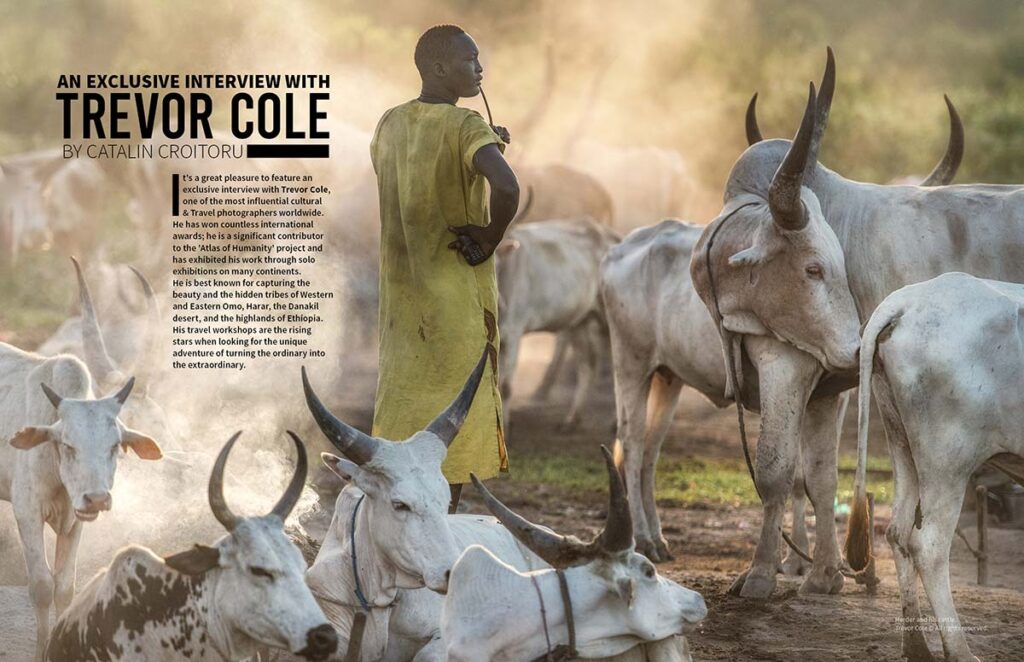
Trevor Cole © All rights reserved. Lens Magazine July 2021 Issue #82
It’s a great pleasure to feature an exclusive interview with Trevor Cole, one of the most influential cultural
& Travel photographers worldwide. He has won countless international awards; he is a significant contributor to the ‘Atlas of Humanity’ project and has exhibited his work through solo exhibitions on many continents.
He is best known for capturing the beauty and the hidden tribes of Western and Eastern Omo, Harar, the Danakil desert, and the highlands of Ethiopia. His travel workshops are the rising stars when looking for the unique adventure of turning the ordinary into the extraordinary.
“Capturing inimitable moments today to reflect upon tomorrow. My own ‘take’ as a geographer photographer!”
– Trevor Cole
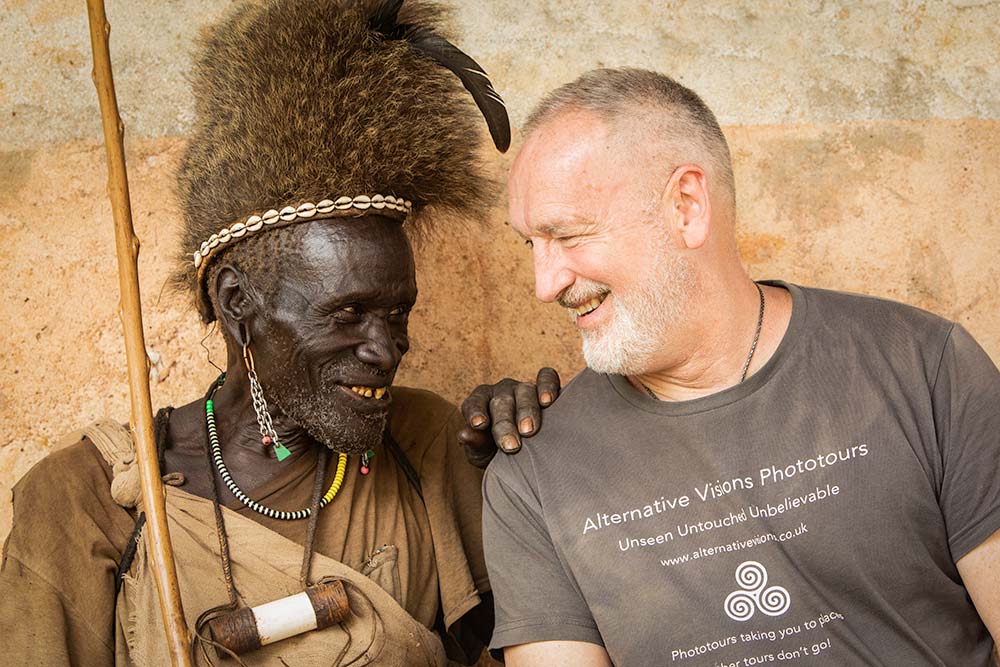
Trevor Cole © All rights reserved.
I was born in the City of Derry but have lived most of my life outside the bounds of Ireland, in England, Singapore, Togo, Italy, Ethiopia, and Brazil. I returned to Ireland (Donegal) in 2012.
My photography, together with travel, have become two of my life’s passions. My photography focuses predominantly on culture and landscapes, images that reflect a spatial and temporal journey through life and which try to convey a need to live in a more sustainable world. I seek the moment and the light in whatever context I find myself and endeavor to use my photographic acumen to turn the ordinary into the extraordinary.
I lead small photo tours in my’ own Donegal’ and Ireland but also to other destinations. I lived in Ethiopia from 2006-2010 and since then have returned to take photographers to the Western and Eastern Omo, Harar, the Danakil desert, and the highlands of Ethiopia. Additionally, I take photo tours to Iceland, Namibia, Angola, Chad, South Sudan, Eritrea, and India and travel myself to discover and capture new locations.
I have been published by National Geographic (online), several British and European digital photography magazines and newspapers, and the Survival International calendar in 2016. I won ‘Wanderlust photographer of the year’ (professional portfolio category) in 2016, ‘Monochrome awards photographer of the year in 2019’, ‘All About Photo Portrait’ category winner 2020 and have been a finalist in Travel Photographer of the Year 6 times achieving a special mention in 2017 and in 2019 a special mention, commended in the ‘Art of Travel’ and winner of the ‘People and Cultures’ portfolio. My images were exhibited as part of the TPOTY exhibition in London. I am a major contributor to the ‘Atlas of Humanity’ project and have had exhibitions throughout Europe and the Middle East, including ‘Scarred’ (African tribal traits and traditions in London on November 19). I have a portfolio of published images with 1x, I have also presented to the Royal Geographic Society, using images to convey an image of Ethiopia that contrasts with widely held perceptions.
AN EXCLUSIVE INTERVIEW WITH
TREVOR COLE
BY CATALIN CROITORU
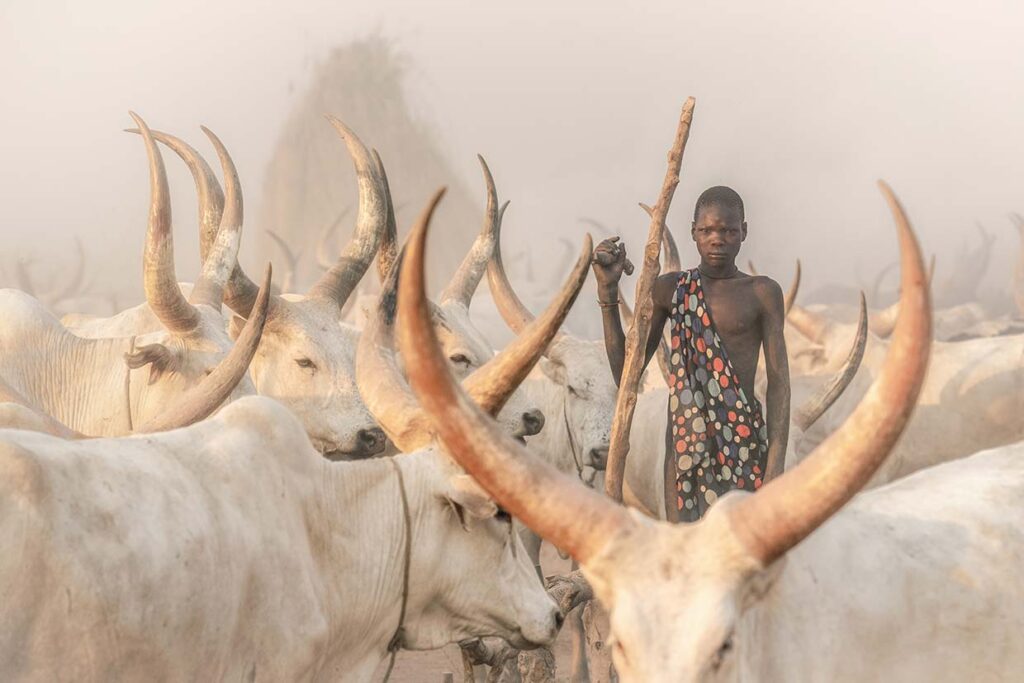
Trevor Cole © All rights reserved.
Lens Magazine: Hello Trevor, thank you for this interview; we are amazed by your excellent travel and tribal cultural projects; please tell us a bit about yourself. What was your photography path during the years? Do you come from an artistic family? Do you have a formal photography education?
Trevor Cole: My interest in photography started at an early age when I traveled with my parents, and they bought me a Rolleiflex SLR. When I taught Geography in England and then in International schools, I wanted to capture people and landscapes in different contexts. I love diversity, and this includes both the human/cultural and the biophysical environment. A Geographer Photographer! I almost went to art college but, in the end, opted to follow my passion for Earth Sciences but the artist in me, I think, enabled me to ‘see photographically.’ I am effectively self-taught.
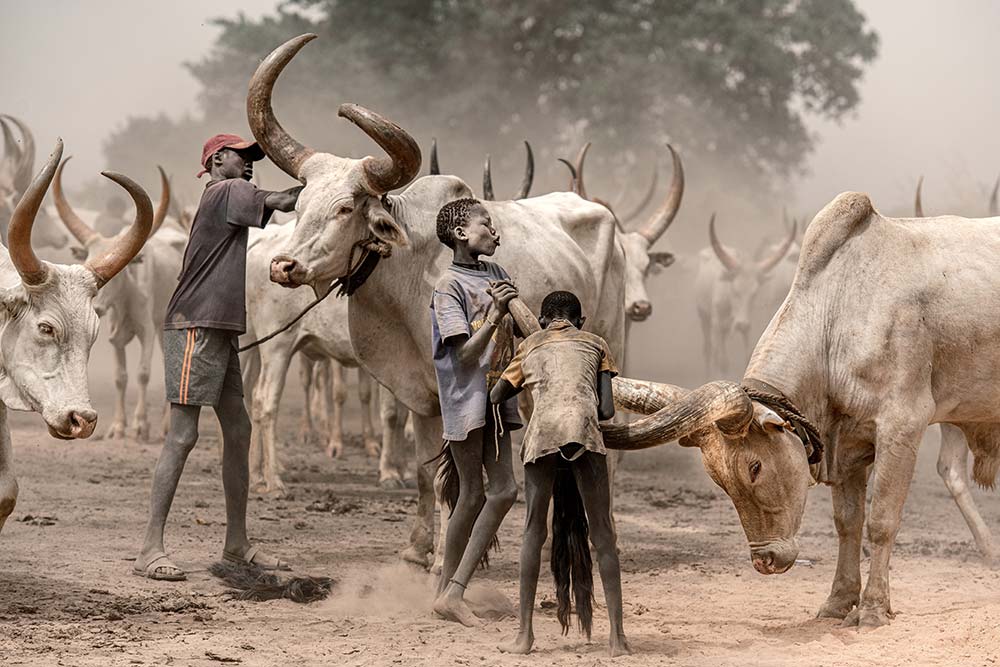
Trevor Cole © All rights reserved.
L.M.: In 2012, you returned to Ireland (Donegal) after living in different locations around the globe, including Singapore, Togo, Italy, Ethiopia, and Brazil. Do you feel that your current photography style was influenced by the cultural atmosphere and experiences in those locations?
T. C.: Yes, absolutely! As a geographer and teacher, I always took advantage of long school holidays and ventured forth to lesser-known areas and regions.
I always like to think that humans are inextricably connected to their environment; hence I love to shoot people and landscapes. People adapt to climates and landscapes; therefore, their cultures reflect their natural habitats, which contributes to the immense diversity of humankind on this Earth. Sadly globalization is reducing diversity and homogenizing culture. I love to travel to more remote areas to see people in their true environmental contexts. The people of the Omo valley in Ethiopia, Himba in Kaokoland, Namibia, or the Mundari of South Sudan. Constant change provides stimulus to capture these people and their cultures while their traditions live on.
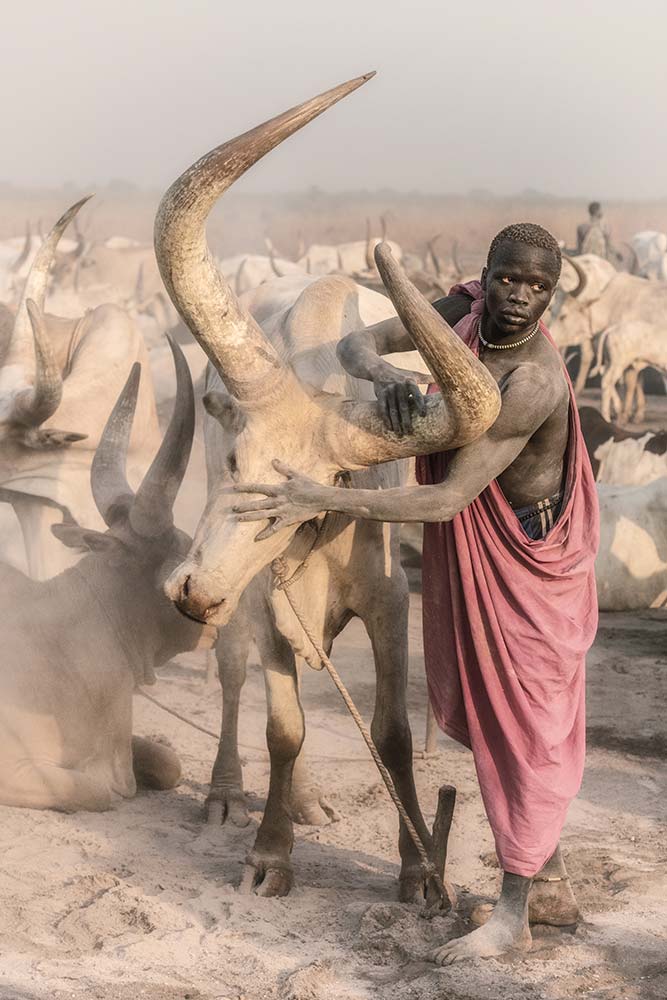
Trevor Cole © All rights reserved.
L.M: Which photographers have influenced your style? Do you have favorite photographers?
T. C.: I think the person I admire the most is Sebastiao Salgado, the Brazilian photographer. His project ‘Genesis,’ which connects indigenous people to their environment, is truly admirable, and so too his most recent work from Amazonia. I also love the photo-journalistic work of Steve McCurry and the portraiture of Lee Jeffries.
L.M.: You are an award-winning international photographer, mostly known for your magnificent images of the Mundari people, Hamar, Dassenech, and many other Ethiopian tribes. What led you to focus on these tribes?
T. C.: I have had for a long time a fascination for indigenous peoples. This has been underpinned by my passion for Geography and photography. Indigenous people have unique ways of life, distinctive cultural traits, and traditions and have an almost symbiotic bond with the environments in which they live. They are inextricably connected to their habitats and biomes. They are often known as ‘first’ peoples, tribal or aboriginal, and tend to live in remote areas of the world. They are also often marginalized and subjected to acculturation where colonizing powers or governments have sought to assimilate them into what they perceive to be mainstream or developed society. The core seeking to control the periphery. There is no doubt in my mind that indigenous peoples are under threat from a multiplicity of outside influences. Acculturation, improved transport and telecommunications, the need for land for agribusiness or mining, proselytization by the church and missionaries, expulsion from national parks, and the inexorable spread of tourism and zooification. I do like to know something about the cultures I immerse myself in as a photographer. The more you know, the more meaningful the interaction becomes, and I think stronger bonds between ‘you and them’ emerge. I am very sensitive to the impacts that tourism can cause. Hence, I will always try to make my visit sustainable and not promote ‘zooification’! Sustainable tourism and photography are imperatives, and I always try to use companies that are sensitive to catering for the future as well as the present day.
‘It’s not what you look at that matters; it’s what you see.’
-Henry David Thoreau
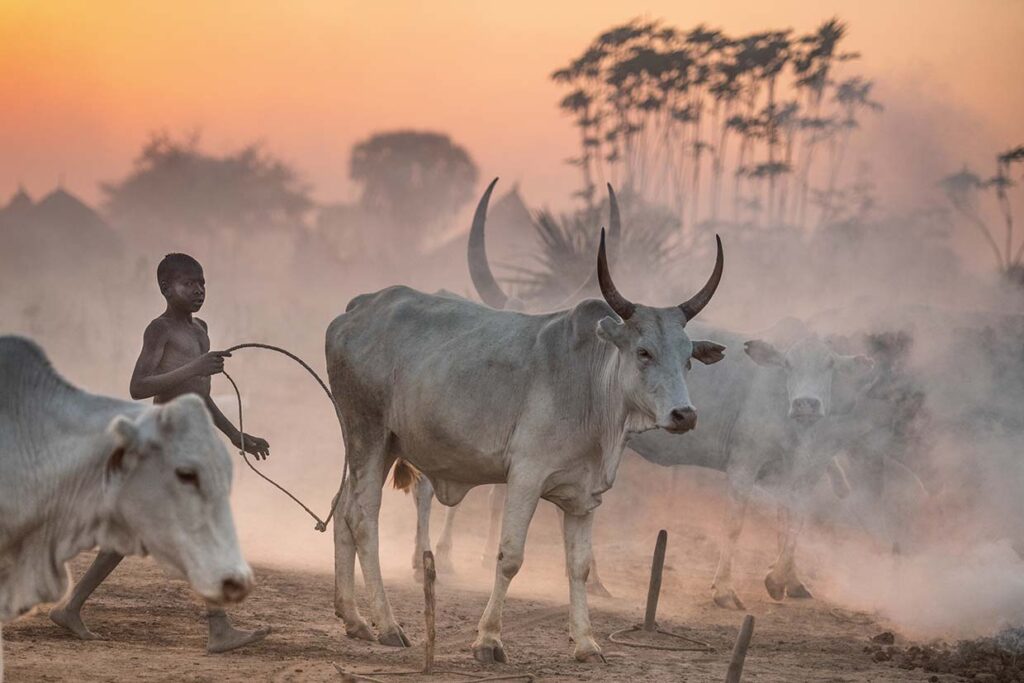
Trevor Cole © All rights reserved.
L.M.: Can you describe the challenging part, from the communication aspect to the more personal situations while staying in the less modern /wild areas? Do you sleep in the village? Spending all of your time with the community?
T. C.: Taking portraits of people in a tribal village or cattle camp requires interaction. There are clandestine shots often taken with a longer lens and are discreet and candid, but most of my ‘people’ based photography is a product of inter-personal moments. I like to spend time, talk, get to know those who are being photographed. I always ask, and even when my efforts are rejected, I always respect their choice. Sometimes, even with challenging subjects, spending a little time using a little humor can yield positive results.
In Ethiopia and South Sudan, most people are relatively easy to photograph except, perhaps, for those who are more conservative culturally and religiously. Even then, I relish the challenge and will certainly try!
I try, where possible, to camp close to villages and try not to be intrusive. Dawn and dusk are always the best times to capture ‘moments and, of course, the best light. A couple of nights, sometimes three is usually enough to truly immerse yourself in tribal life.
An excellent local guide is always imperative, and this enables connectivity and cultural understanding. Taking some provisions to the village and presenting them to the village head makes a huge difference and enables a very friendly approach with the whole village willing to partake.
L.M.: On your website, we can find many exciting workshops. How did you start photography travel tours? Are you based most of the year in Africa?
T. C.: When I returned from teaching in Brazil in 2012, I decided to follow my photographic passion and set up small tours locally in Ireland (I live in North Donegal on the Wild Atlantic Way). It seemed like a good idea to also run a few photo tours to places I knew well or had lived in.
I lived in Ethiopia for 4 years and grew to love the country, people, and cultural diversity. Going to Chad, Angola, Eritrea and South Sudan seemed like a natural progression. I usually travel for about three months of the year.
L.M.: You are also leading photo tours to Iceland, Namibia, Angola, Chad, South Sudan, Eritrea, and India. What is your favorite location from all the large numbers of places?
T. C.: This is a difficult question because each country or location has a different appeal. In places like Iceland, Canada, or my home country of Ireland, I love the landscapes and seascapes. The appeal of wilderness and how nature has taken its course over time. I loved teaching geomorphology, hence seeing a landscape through the lens but also knowing something of its origins makes it appealing. I love Ethiopia and, most recently, South Sudan, where my focus is mainly on people and cultures. These people are still inextricably connected to nature in ways that we have lost in our ‘cloned’ world. The Mundari cattle camps have perhaps given me the best photo opportunities I have ever had.
The air in a cattle camp is filled with smoke from the dung and kindle wood fires to keep insects at bay. The Mundari cover themselves in ash which gives them a ghostly appearance as they walk between their animals.
As the sun sets in African style, the light, smoke, and dust create an ethereal atmosphere, making it appear that the Mundari and their cattle fade into a mist. An ancient mist, trapped in time, where tribal traits and traditions are perpetuated in the twenty-first century. These ancient practices ensure harmony with the environment and have a small ecological footprint that is local and ensures cultural longevity. These people have a very sustainable existence, and their connection with nature should be a message to us all. It is this which draws me in.
L.M.: Is there one specific place you feel is more dangerous than others? That you tried to avoid in the past few years?
T. C.: To be honest, I have rarely felt ‘danger’ in any of the countries I have been to or photographed in. For example, South Sudan was immersed in a civil war until recently, but it had been safe and welcoming in the last few years.
L.M.: The upcoming September workshop will be focused on a photography journey of fifteen days in ANGOLA to the Namib Province. Can you tell us more about this workshop?
T. C.: Sadly, due to the ongoing pandemic scenario, Angola has largely closed its doors this year, but hopefully, all this will change in 2022. This trip takes us to the northern Namib desert in Angola. The area is remote and largely untouched by tourism, and there is a great deal of cultural diversity. We camp close to the indigenous groups, and the opportunities reflect both the diversity and exciting landscapes in which they live. Some of the ethnic groups include Mugambue, Kung bushmen, Mutua, Himba (more commonly associated with Namibia), Mucuwana, Mundimba, and Nguendelengo. As a photographer and someone who loves to immerse themselves in cultural variance, this is a wonderful opportunity.
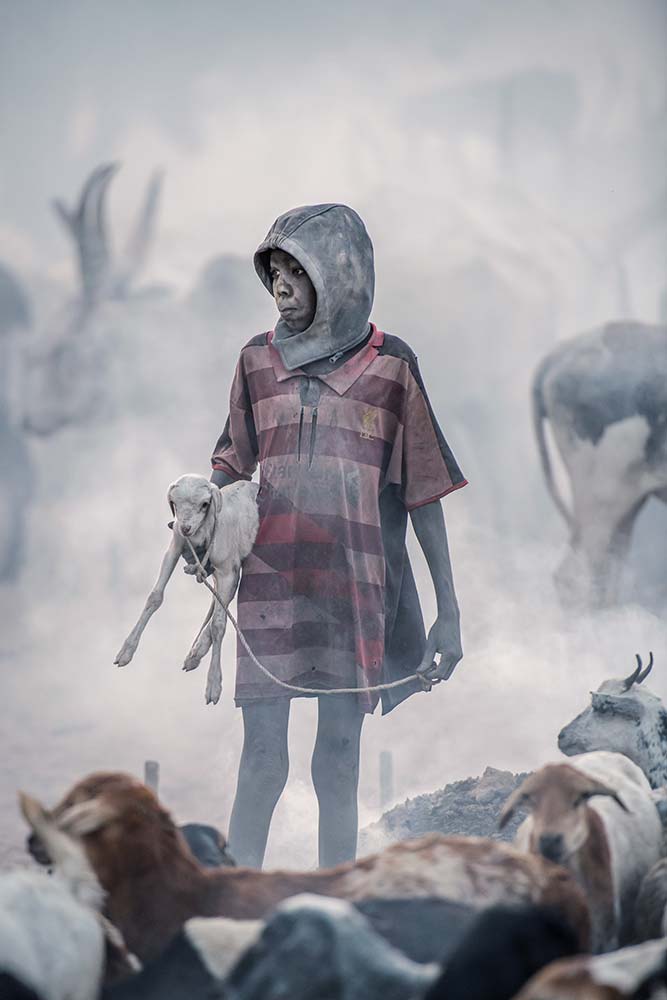
Trevor Cole © All rights reserved.
L.M.: I’m sure our readers are curious about your gear while traveling. What type of cameras and lenses do you shoot with? I guess it’s not easy carrying all of the equipment through different locations?
T. C.: I use a Nikon D850 and Z7ii with the AF-S Zoom-Nikkor 24-70mm f/2.8G ED, AF-S Nikkor 70-200mm f/2.8G ED VR II, AF-S Nikkor 85mm f/1.4G.
I have used Nikon now since the days of analog photography, and I feel that once you invest in gear, it is best to stick with it, and I am comfortable doing so. I prefer to carry two bodies with contrasting lenses to avoid changing the lens and thus risk dust on the sensor. I predominantly use the 70-200 f2.8, usually at f2.8, especially for portraits and the 85mm f1.4, but for occasional wide-angle shots, I used the 24-70 f2.8. These lenses enable me to take very sharp meaningful portraits and contextual scenes. It is a challenge carrying gear, but the 4×4’s enable us to access villages and camps relatively easily in most cases.
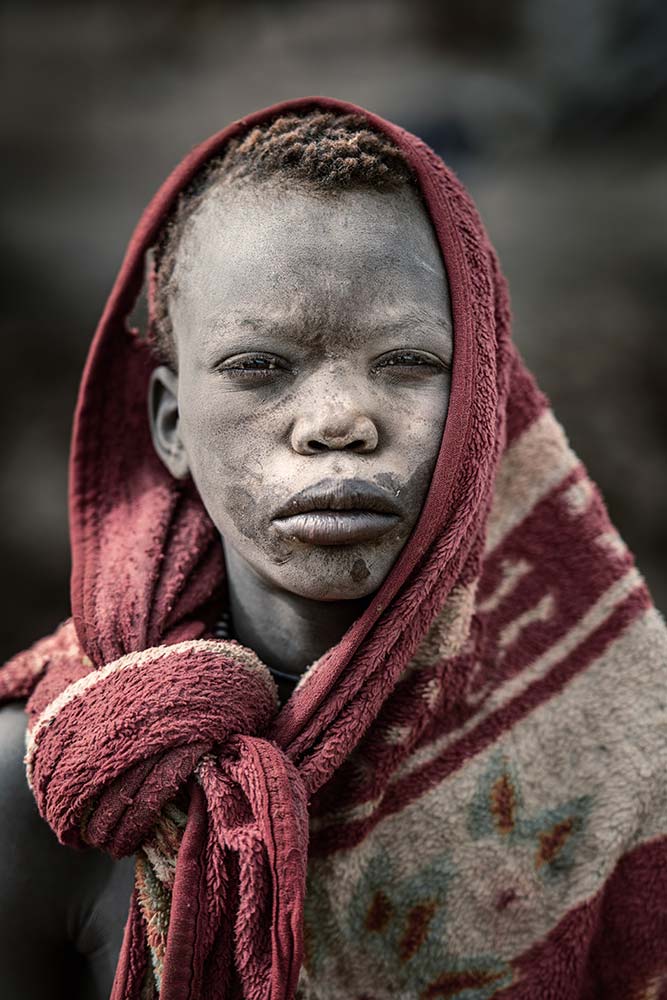
Trevor Cole © All rights reserved.
L.M: Your work is very sharp and colorful. Describe your workflow; what kind of photo-editing do you use? What is your best post-processing tip?
T. C.: I use Adobe Lightroom Classic CC and the Nik suite of plugins. I tend to be quite particular in selecting images and tend to go through them chronologically rather than skimming and selecting. I try to do most of the work ‘in camera’ and do as little post-editing as possible. If I look at my work overtime, there is a marked ‘evolution’ in my photography. If I had to give anyone a tip, it would be to use less vibrancy and saturation and look for natural tones. A few years back, there was a tendency to enhance color; now, I tend to do the opposite!
L.M.: Do you also sell your photography work?
T. C.: Yes, I sell my work, but I usually sell the files for printing, mounting, and framing, and then sending them to global locations is challenging and expensive. If I sell the file, the buyer can use a local printer/framer and do everything with it.
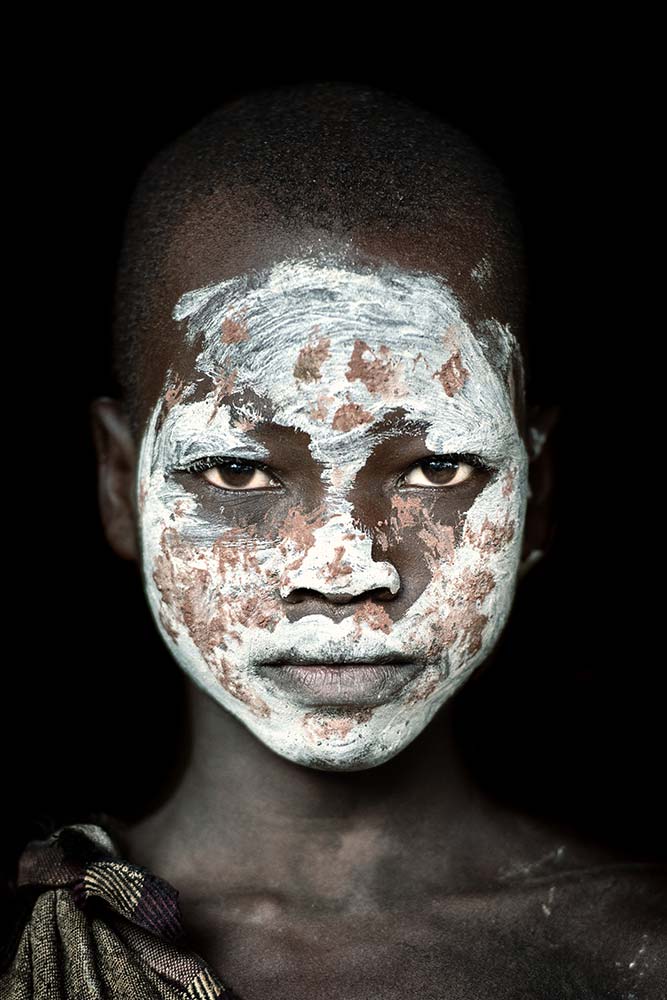
Trevor Cole © All rights reserved.
L.M: What is your new dream location? Is there a place you want to travel to have a new project that you’ve never done before?
T. C.: I would like to take small photo tours to Socotra (an island off the coast of Somalia but part of Yemen). I have been here twice and may go again later this year to assess its potential. Yemen itself, now unsafe, is simply incredible. My other dream location and somewhere I have not been in Iran. I have plans to travel there in October 2022.
L.M: What is your best photography tip for the young photographers who would like to start traveling to these unique locations in Africa?
T. C.: I would genuinely recommend anyone interested in cultural, wildlife, street, or landscape photography to go. It’s incredible and is less touristed than other continents. It is difficult to do on a ‘shoestring,’ and getting to remote areas requires vehicles, permits, and guides. Joining a photo tour is a perfect way of reducing costs and getting to places many do not see. Namibia is a great country to start with as it’s very safe and scenically out of this world with unique tribal enclaves in the North and superb game viewing.



